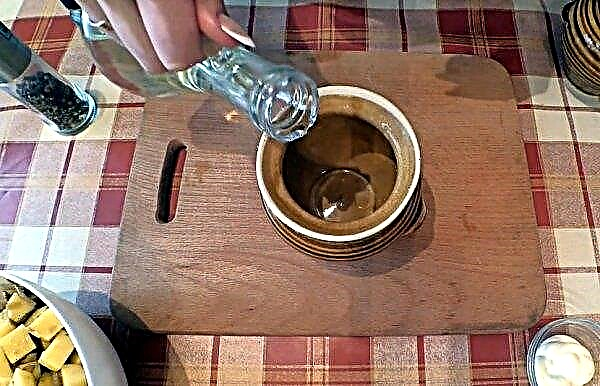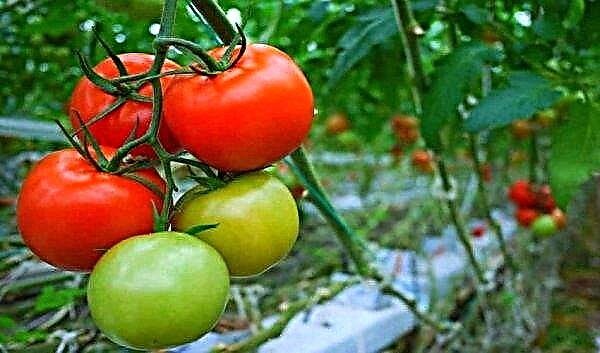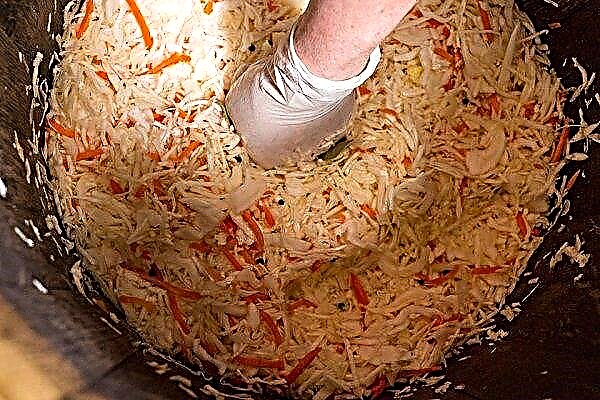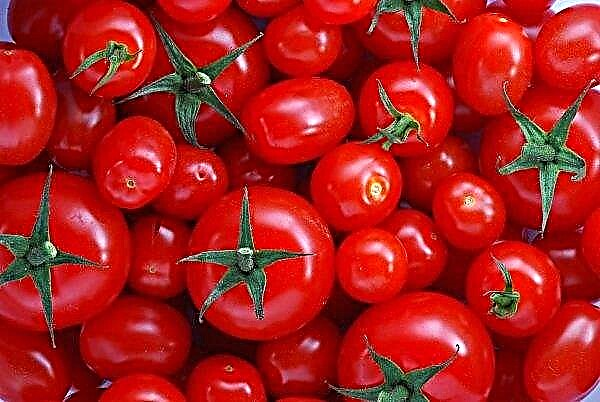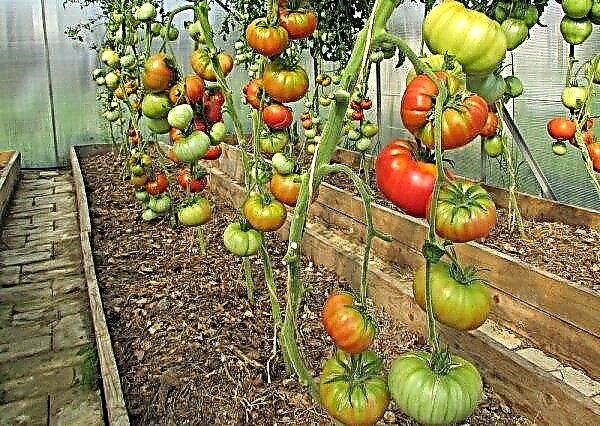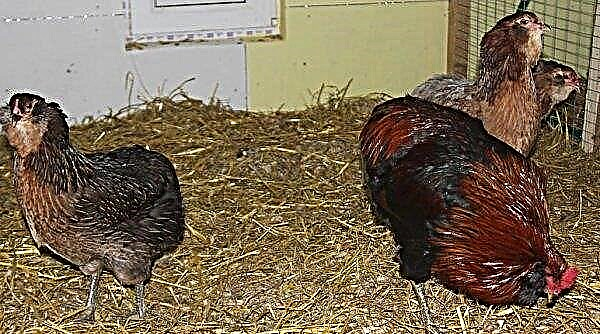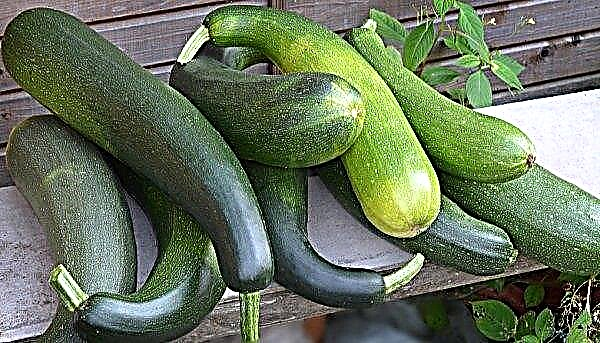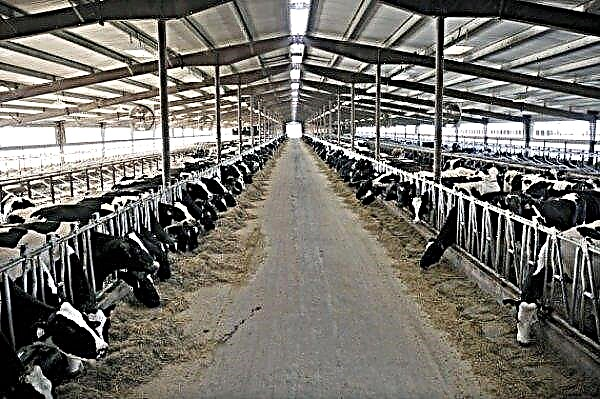Tomatoes are often subject to various diseases, as they are highly dependent on environmental conditions. Improper temperature conditions can cause late blight, which can lead to the death of all seedlings in the garden. How to deal with this problem - we will consider in this article.
Description of the disease
Late blight is a disease that is caused by the fungus Phytophthora infestans. This fungus is found very often, because it grows and develops well in the soil, on garden tools, and especially in the greenhouse (fungi like high humidity).
Important! Treat the plants immediately after identifying the symptoms of late blight, as this fungus in 70% of cases kills the entire bush within a few days.
Reasons for the appearance
The causes of fungal diseases are a violation of the climate and non-compliance with the temperature regime in the habitat of plants. Namely - an excess of moisture, both in soil and in air, and a sharp decrease in temperature.
Spores of fungi simply can neither exist nor strike the “owner” without water, since it is with it that the vital activity of these parasitic uninvited guests is directly related.
Signs
It is important to remember that this disease is very dangerous for the entire garden, so it is necessary to diagnose it as soon as possible and immediately begin treatment.
The main signs of late blight are:
- the appearance of spots on the back of the sheet;
- change of green leaves to brown, mass drying of leaf plates;
- noticeable darkening of shoots;
- dark (sometimes black) spots appear on the fruit.
What is dangerous late blight
The danger of the fungus Phytophthora infestans depends on the degree of susceptibility of the tomato variety to diseases of this kind.
Basically, late blight provokes:
- decrease in productivity up to 70% or complete death of bushes;
- spoilage of seed material;
- decreased immunity even in resistant varieties.
Harmful spores of fungi are easily tolerated throughout the site and can affect not only tomatoes, but also other crops.
Properties of Tomato Serum
The whey obtained from the preparation of cottage cheese contains a huge amount of useful substances that kill harmful fungal microflora, which helps save the affected bushes.
The largest role in its composition is played by a large number of amino acids, which not only completely destroy the fungus, but also strengthen the immunity of plants, allowing them to quickly and easily recover after parasitic intervention.
How to prepare a solution for processing
Despite all the useful properties of this folk remedy, a solution based on serum must be properly prepared. Moreover, in addition to the main component, it is customary to add organic fertilizers for the speedy recovery of plants after the disease.
Proportions
To prepare a serum solution, you must:
- 10 l of clean warm water;
- 1 liter of fresh whey;
- 30 ml of wood ash;
- 10-30 drops of iodine (kills all harmful microorganisms).
Step-by-step cooking instructions
So, all the ingredients are ready.
Cooking Instructions:
- Pour pure water at room temperature gradually into the serum.
- Mix thoroughly, add iodine and mix again.
- Add ash to the finished solution and leave to infuse for 30 minutes - 1 hour.

Basic processing rules
Spraying shrubs with serum solution has a number of rules that must be strictly followed:
- On hot days without precipitation, plants should be treated only in the morning and in the evening (before and after the sun).
- On cloudy, rainy days, you should try to process the bushes in such a way that the rain does not wash away the solution for 1 hour.
- Repeat the procedure for 5-10 days.
Did you know? Phytophthora feels great in the ground for several years, transferring even the most severe frosts.
Processing technology
The process of treating plants with whey is extremely simple, but it is necessary to further prepare shrubs before spraying:
- Weed out all the weeds and thoroughly loosen the ground.
- Remove all racks for tying and rinse thoroughly, grout the soil around tomatoes and all wooden garden tools.
- Pour the solution into the spray bottle and spray the leaves (on both sides), stems, fruits, and branches well.
- Do not regret the solution - it is fatal to the fungus, but harmless to the tomatoes themselves.
So, subject to temperature conditions and proper watering, the likelihood of tomato damage by fungus is sharply reduced, so you need to carefully monitor the environment in which the crops live. But even if the leaves of the tomatoes were struck by a dangerous fungus, whey can easily cope with it.
Network user reviews
I’ve grown tomatoes for 15 years and tried everything I can, the most positive and safe option is phytosporin.

